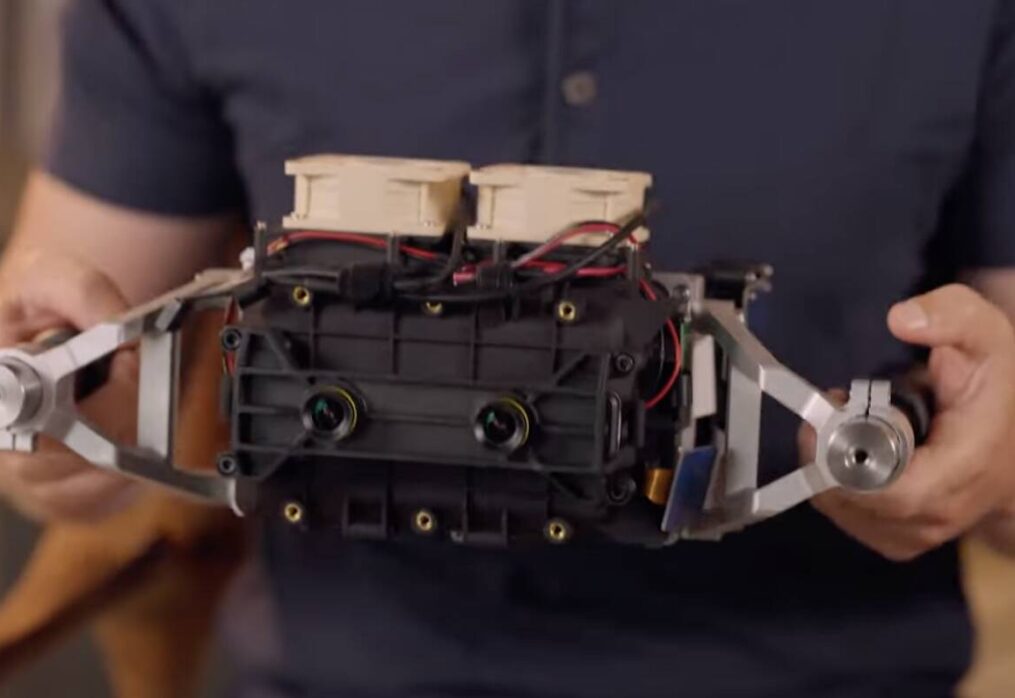Metaverse progress update: Some VR headset prototypes nowhere near shipping
Facebook owner Meta’s pivot to the metaverse is drawing significant amounts of resources: not just billions in case, but time. The tech giant has demonstrated some prototype virtual-reality headsets that aren’t close to shipping and highlight some of the challenges that must be overcome.
The metaverse is CEO Mark Zuckerberg’s grand idea of connected virtual worlds in which people can interact, play, shop, and work. For instance, inhabitants will be able to create avatars to represent themselves, wearing clothes bought using actual money – with designer gear going for five figures.
Apropos of nothing, Meta COO Sheryl Sandberg is leaving the biz.
In a video today starring Zuck and his corporation’s Reality Labs chief scientist Michael Abrash, the pair explained their goal is to produce for metaverse players augmented- and virtual-reality headsets with perfect visual fidelity that’s indistinguishable from the real world. But there’s nothing out there right now that can deliver that level of realism, Abrash said.
“It’s not going to be long until we can create scenes in basically perfect fidelity,” Zuckerberg added. To demonstrate his team’s progress, Zuckerberg showed off several pieces of prototype hardware that are said to be “nowhere near ready to ship.”
Zuckerberg said there are four issues Reality Labs is trying to address with VR and AR: increased resolution, variable focal depth and eye tracking, eliminating distortions in VR lenses, and bringing high-dynamic range to VR headsets.
In the video, Zuckerberg showed off and discussed several headsets: one called Butterscotch has near 20/20 high-fidelity vision, but needs a reduced field of view to compensate; Starburst can produce an eye-watering 20,000 nits of brightness (the Quest 2 outputs 100 nits) but is so bulky it can’t be worn; and the near-complete Holocake 2 brings some experimental features to something akin to but not quite an actual wearable headset.
Meta was on a hiring spree for metaverse-building folk in late 2021, though tech industry downturns so far this year have driven it to freeze hiring at Reality Labs, where it develops this 3D VR technology.
- Meta hires network chip guru from Intel: What does this mean for future silicon?
- Consultant plays Metaverse MythBuster. Here’s why they’re wrong
- Microsoft confirms HoloLens boss Alex Kipman to be reorganized out the door
- Metaverse privacy maturity lags enthusiasm for new virtual worlds
Prior to the hiring freeze, Meta’s stock plummeted in value on poor first-quarter earnings reports; over the course of 2021 it turned out Reality Labs posted a $10.2 billion loss, earning only $2.3 billion after spending $12.5 billion.
In March, Forbes reported a drop in interest in the metaverse and Web 3 technology generally, and analyst reports on the reality of the metaverse have said that it’s currently nothing but fantasy.
Outside of the actual technology, privacy issues and inappropriate behavior have become issues in multi-player VR environments, with Facebook even enabling a “grope gap” in its Horizon Worlds platform that keeps avatars four feet apart.
Facebook rebranded itself to Meta in late 2021, not long before revealing its first-ever decline in users. Meta was also sued last week over alleged harmful effects its algorithms have on young users. ®
